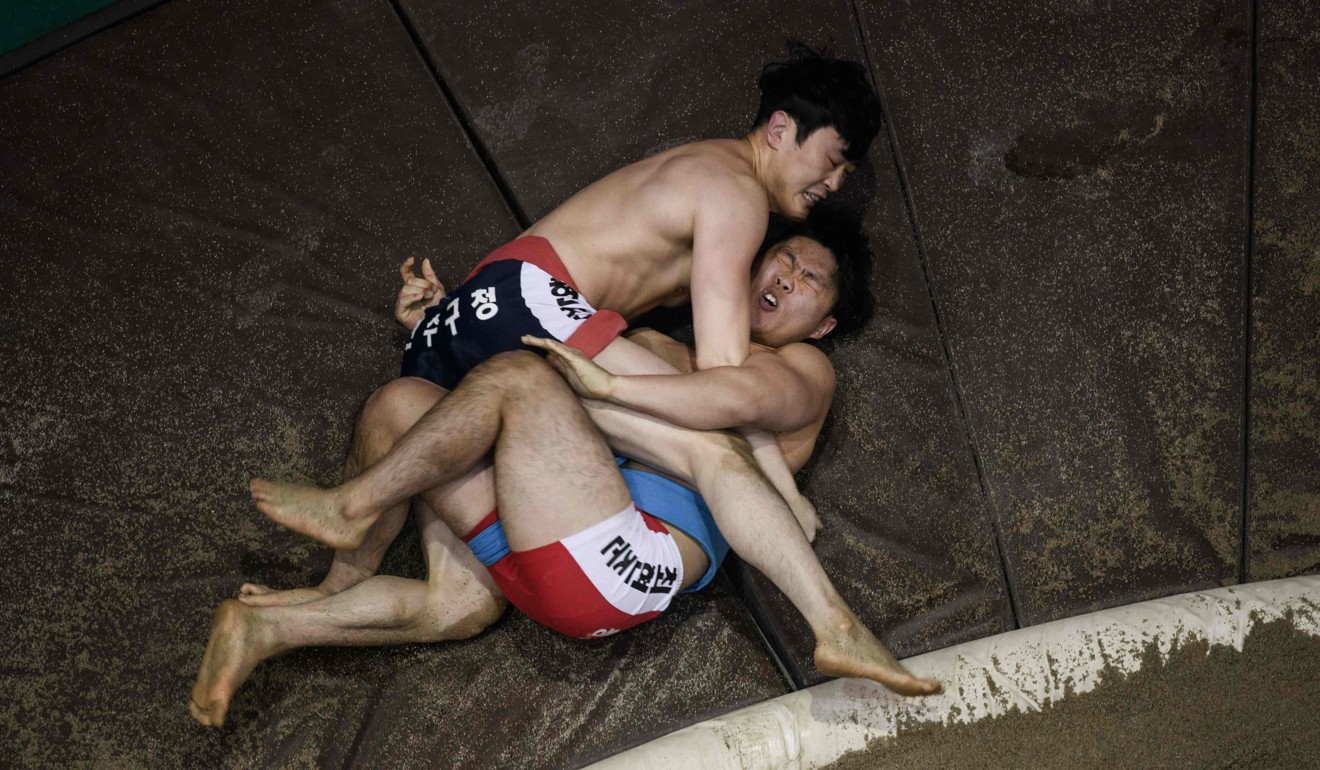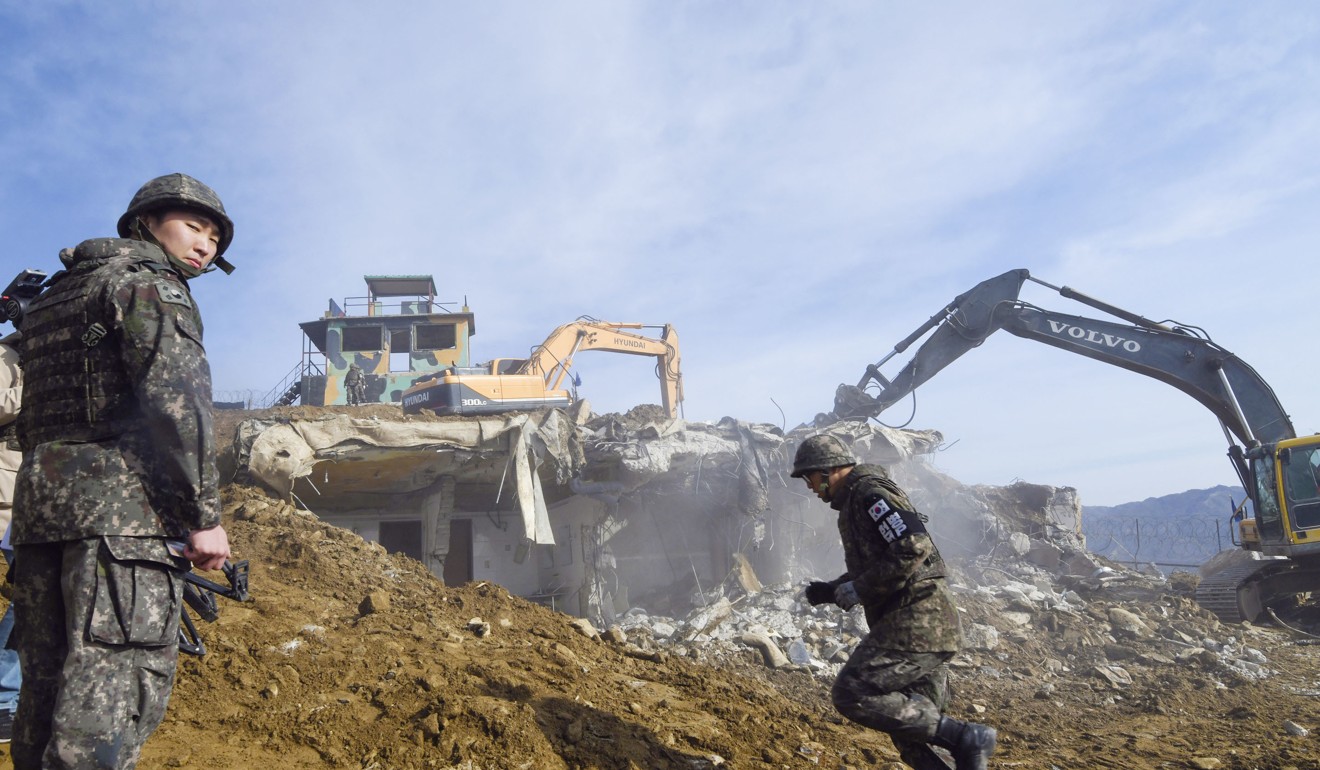
North and South Korea win heritage status for traditional wrestling with joint Unesco bid
- The two Koreas had originally filed separate applications for their traditional form of wrestling to be recognised on the world heritage list
- Although it is common for countries to jointly submit bids, the North and South have typically been in competition for adding new items

North and South Korea marked a new step in their reconciliation efforts on Monday as Unesco accepted their joint bid for Korean wrestling to be recognised as part of the world’s cultural heritage.
The two Koreas had originally filed separate applications for their traditional form of wrestling to be recognised on the UN cultural agency’s world heritage list.
“The fact that both Koreas accepted to join their respective applications is unprecedented,” Unesco chief Audrey Azoulay said in a statement. “This inscription, through a joint application, constitutes a historic first step on the road to inter-Korean reconciliation.”
The bid was approved by Unesco’s committee for safeguarding of intangible cultural heritage at a meeting in Mauritius.

Known as Ssirum for North Korea and Ssireum for the South – each uses a different system to render the language into English – wrestling has been practised at village festivals for centuries.
Nationwide competitions are still held every Chuseok, the Korean harvest festival, on either side of the border.
The sport has some similarities to Japanese sumo but begins with two wrestlers facing each other on their knees in a pit, holding onto a cloth sash tied around the waist and using their strength and technique to knock their opponent to the ground.
In the South, wrestlers are topless and only wear tight shorts, while in the North they don sleeveless jackets. Southern matches are held on sand while the North uses a round mattress.

There has only been one inter-Korean wrestling competition, on the South’s Jeju island, in 2003.
While it is common for countries to jointly submit bids for Unesco’s list of the world’s greatest cultural treasures – such as the “Mediterranean diet” or falconry – the two Koreas have typically been in competition for adding new items.
South Korea added its tradition of making kimchi – a fermented cabbage dish widely enjoyed across the peninsula – in 2013, prompting the North to seek the same status for its own version, granted in 2015.
The Korean folk song “Arirang” has a similar story – the South’s was recognised in 2012, followed by the North’s two years later. For wrestling, the South applied in 2016, a year after the North.
But at a meeting with South Korean President Moon Jae-in in Paris last month, Azoulay suggested the requests be combined, and the idea was also taken up with North Korean officials.
The joint bid was made possible by a rapid diplomatic thaw between the two Koreas with three summits this year between Moon Jae-in and North Korean leader Kim Jong-un.

There have been sport and cultural exchanges and the removal of guard posts along the heavily fortified demilitarised zone. The two sides also agreed to restart a project to compile a joint dictionary to reconcile differences in the language that have cropped up from more than 70 years of division.
The two Koreas are still technically at war after the 1950-53 conflict ended with an armistice rather than a peace treaty, sealing the division of the peninsula with an impenetrable border.
This border, the four-kilometre-wide by 248 kilometre-long demilitarised zone, has become something of a nature reserve due to the lack of human activity.
Unesco has suggested it could be designated as a special natural biosphere under a similar joint initiative.
Additional reporting by The Guardian